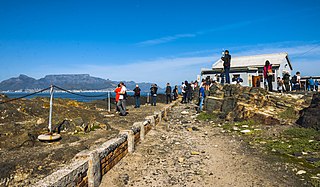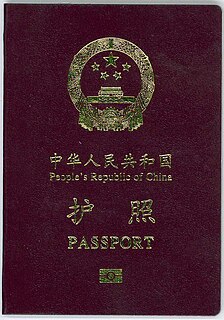
The economy of the British Virgin Islands is one of the most prosperous in the Caribbean. Although tiny in absolute terms, because of the very small population of the British Virgin Islands, in 2010 the Territory had the 19th highest GDP per capita in the world according to the CIA World factbook. In global terms the size of the Territory's GDP measured in terms of purchasing power is ranked as 215th out of a total of 229 countries. The economy of the Territory is based upon the "twin pillars" of financial services, which generates approximately 60% of government revenues, and tourism, which generates nearly all of the rest.

The economy of Trinidad and Tobago is the wealthiest in the Caribbean and the third-richest by GDP (PPP) per capita in the Americas. Trinidad and Tobago is recognised as a high-income economy by the World Bank. Unlike most of the English-speaking Caribbean, the country's economy is primarily industrial, with an emphasis on petroleum and petrochemicals. The country's wealth is attributed to its large reserves and exploitation of oil and natural gas.

Tourism in France directly contributed 79.8 billion euros to gross domestic product, 30% of which comes from international visitors and 70% from domestic tourism spending. The total contribution of travel and tourism represents 9.7% of GDP and supports 2.9 million jobs in the country. Tourism contributes significantly to the balance of payments.

Tourism in Australia is an important component of the Australian economy, and consists of domestic and international components. In the financial year 2014/15, tourism represented 3.0% of Australia's GDP contributing A$47.5 billion to the national economy. In 2019, the contribution was a record $44.6 billion. Domestic tourism is a significant part of the tourism industry, representing 73% of the total direct tourism GDP.

Mafeteng is a city in Lesotho, and the Camptown of the district of Mafeteng. It is located about 76 kilometres south of the country's capital, Maseru and has a population of approximately 61,000. The South African border town to Mafeteng is Wepener.

Tourism in New Zealand comprises an important sector of the national economy – it directly contributed NZ$16.2 billion of the country's GDP in the year ended March 2019. In 2016 tourism supported 188,000 full-time-equivalent jobs. The flow-on effects of tourism indirectly contribute a further 4.3% of GDP. Despite the country's geographical isolation, spending by international tourists accounted for 17.1% of New Zealand's export earnings. International and domestic tourism contributed, in total, NZ$34 billion to New Zealand's economy every year as of 2017.

Germany is the eighth-most-visited country in the world, with a total of 407.26 million overnights during 2012. This number includes 68.83 million nights by foreign visitors, the majority of foreign tourists in 2009 coming from the Netherlands, the United Kingdom, and Switzerland. Additionally, more than 30% of Germans spend their holiday in their own country. According to Travel and Tourism Competitiveness Reports, Germany is ranked 3 out of 136 countries in the 2017 report, and is rated as one of the safest travel destinations worldwide.
The United Kingdom is the world's 10th biggest tourist destination, with over 37 million visiting in 2018. The tourism industry contributed a total of £213 billion to the GDP in 2017, which is expected to increase to £265 billion by 2028.

London is one of the world's leading tourism destinations, and the city is home to an array of famous tourist attractions. The city attracted 20.42 million international visitors in 2018, making it one of the world's most visited in terms of international visits. It welcomed an additional 27.8 million overnighting domestic tourists in 2017, and had 280 million daytrippers in 2015.

Tourism is an economic contributor to the Kingdom of Thailand. Estimates of tourism revenue directly contributing to the GDP of 12 trillion baht range from one trillion baht (2013) 2.53 trillion baht (2016), the equivalent of 9% to 17.7% of GDP. When including indirect travel and tourism receipts, the 2014 total is estimated to be the equivalent of 19.3% of Thailand's GDP. The actual contribution of tourism to GDP is lower than these percentages because GDP is measured in value added not revenue. The valued added of the Thailand's tourism industry is not known. According to the secretary-general of the Office of the National Economic and Social Development Council in 2019, the government projects that the tourism sector will account for 30% of GDP by 2030, up from 20% in 2019.

Tourism in China is a growing industry that is becoming a significant part of the Chinese economy. The rate of tourism has greatly expanded over the last few decades since the beginning of reform and opening-up. The emergence of a newly rich middle class and an easing of restrictions on movement by the Chinese authorities are both fueling this travel boom. China has become one of the world's most-watched and hottest inbound and outbound tourist markets. According to Xinhuanet, the world is on the cusp of a sustained Chinese tourism boom.

Tourists are drawn to Switzerland's diverse landscape as well as activities. Most interesting are the Alpine climate and landscapes, in particular for skiing and mountaineering.

Tourism in Cyprus occupies a dominant position in the economy. Moreover, it significantly impacts Cyprus culture and its multinational/multicultural development throughout the decades. In 2006, the tourism industry contributed 10.7% of the GDP which in real terms it generated a total of US$5,445.0 mn. In the same year, the total employment was estimated at 113,000 jobs. With almost 4 million tourist arrivals per year, it is the 40th most popular destination in the world. However, per capita of local population it ranks 6th. Cyprus has been a full member of the World Tourism Organization since 1975.

South Africa is a tourist destination and the industry accounts for a substantial amount of the country's revenue. The official marketing agency for the country South African Tourism is responsible for marketing South Africa to the world. According to the World Travel & Tourism Council, the tourism industry directly contributed ZAR 102 billion to South African GDP in 2012, and supports 10.3% of jobs in the country. The official national marketing agency of the South African government, with the goal of promoting tourism in South Africa both locally and globally is known as South African Tourism.
Tourism in Iceland has grown considerably in economic significance in the past 15 years. As of 2016, the tourism industry is estimated to contribute about 10 percent to the Icelandic GDP; the number of foreign visitors exceeded 2,000,000 for the first time in 2017; tourism is responsible for a share of nearly 30 percent of the country's export revenue.

Despite a high potential for tourism, tourism in Madagascar is underdeveloped. Madagascar's tourist attractions include its beaches and biodiversity. The island's endemic wildlife and forests are unique tourist attractions. However, historical sites, craftsmen communities, and relaxed cities make it a favorite with return travellers.
Visa requirements for Canadian citizens are administrative entry restrictions by the authorities of other states placed on citizens of Canada. As of 1 May 2020, Canadian citizens have visa-free or visa on arrival access to 183 countries and territories, ranking the Canadian passport 9th in terms of travel freedom according to the Henley & Partners Passport Index.

Visa requirements for Indian citizens are administrative entry restrictions by the authorities of other states placed on citizens of India. As of 1 July 2020, Indian citizens had visa-free or visa on arrival access to 58 countries and territories, ranking the Indian passport 85th in terms of travel freedom according to the Henley Passport Index.

Visa requirements for Chinese citizens are administrative entry restrictions imposed on citizens of China by the authorities of other states.

Kazakhstan is the ninth-largest country by area and the largest landlocked country. Today, tourism is not a major component of the economy. As of 2014, tourism has accounted for 0.3% of Kazakhstan's GDP, but the government has plans to increase it to 3% by 2020. The country inherited the culture of the ancient Silk Road, Nomadic lifestyle and Soviet Union which had a great influence on its formation. This mixture makes Kazakhstan so different from any other country in the region and in the world.

















